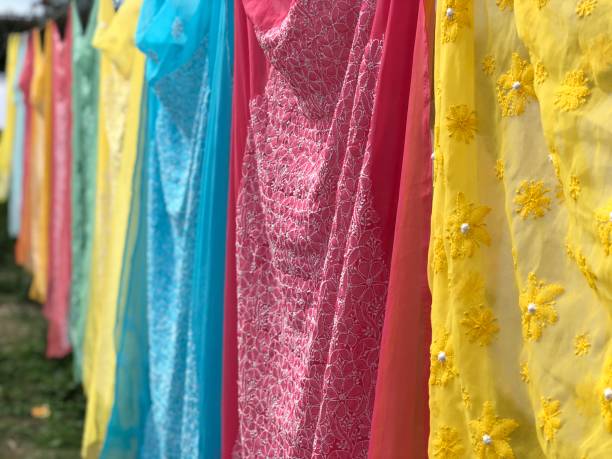Lucknow Chikankari
Lucknow chikankari, timeless and exquisite embroidery tradition, stands as a testament to India’s rich cultural heritage. The art of Chikankari has been passed down through generations, evolving and adapting while retaining its distinctive elegance. The book, “The Art of Lucknow Chikankari: A Timeless Tradition,” delves into the intricate history, techniques, and the enduring charm of this craft.
Chikankari
Chikankari, which translates to ’embroidery,’ finds its roots in the city of Lucknow, in the heart of Uttar Pradesh, India. It is a form of hand-embroidery that involves intricate and delicate white threadwork on fabrics, typically on lightweight materials like muslin, silk, chiffon, and cotton. The book serves as a comprehensive guide for anyone interested in understanding the evolution of Chikankari and its significance in the realm of Indian textiles.
The origins of Chikankari date back to the Mughal era, with the craft being patronized by the Nawabs of Lucknow, who had a deep appreciation for the artistry and elegance it brought to their clothing. This book carefully traces the historical journey of Chikankari, explaining how it was initially introduced to India by Persian and Mughal influences, eventually blending with local techniques to create a distinctive form of embroidery.
The Art of Lucknow Chikankari
“The Art of Lucknow Chikankari” not only provides historical context but also delves into the intricate techniques and stitches that define this art form. It explores the various stitches used in Chikankari, such as ‘shadow work,’ ‘phanda,’ ‘keel kangan,’ and ‘murri.’ The book offers detailed insights into the painstaking process of creating these stitches, demonstrating the craftsmanship and skill required to produce intricate Chikankari patterns.
One of the key features of this book is its visual presentation. It showcases a stunning collection of Chikankari masterpieces from different regions and time periods, highlighting the diverse motifs and designs that have emerged over the years. Readers can witness the versatility of Chikankari, from traditional floral motifs to contemporary patterns that have made it a popular choice in modern fashion.
Furthermore, the book celebrates the artisans who dedicate their lives to preserving and advancing the Chikankari tradition. It acknowledges the challenges faced by these skilled craftsmen and women and emphasizes the importance of supporting and promoting their work. Chikankari has not only thrived as a traditional craft but also found its place in the world of high fashion, and the book highlights the role of contemporary designers in bringing this art form to a global audience.
“The Art of Lucknow Chikankari: A Timeless Tradition” serves as a testament to the enduring appeal of this art form. It is a craft that has stood the test of time, adapting to changing tastes and preferences while maintaining its authenticity and cultural significance. The book is a valuable resource for those who wish to explore the beauty and history of Chikankari, as well as for designers, fashion enthusiasts, and historians interested in the intricate tapestry of India’s textile heritage.
In conclusion
“The Art of Lucknow Chikankari: A Timeless Tradition” offers a deep dive into the history, techniques, and cultural significance of this age-old craft. It not only educates readers but also instills a sense of appreciation for the artisans who have kept this tradition alive through the centuries. Chikankari is indeed a timeless tradition that continues to enchant and inspire, and this book is a fitting tribute to its enduring legacy.
